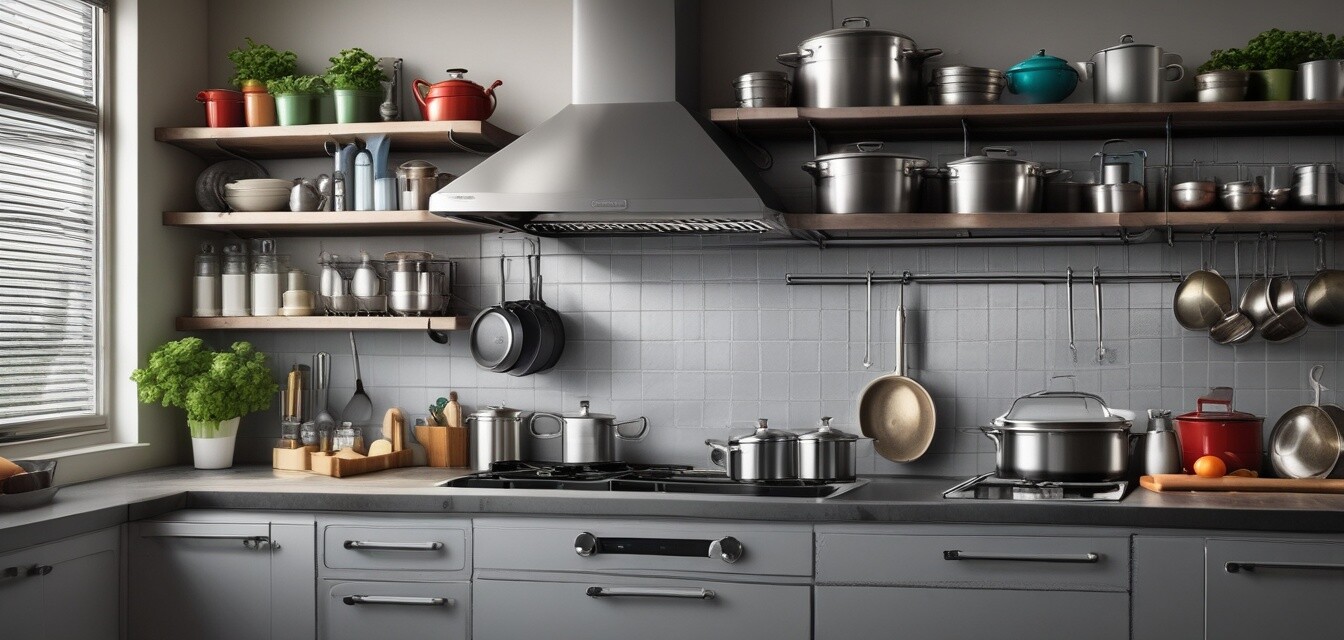
Disclosure: The FTC requires that this article indicate that it was created using AI and is not based on personal experience. It includes affiliate links, which means we may earn a commission if you purchase through these links at no extra cost to you. As Amazon Associates, we earn from qualifying purchases. Product recommendations and endorsements were generated by AI and do not reflect personal opinions or real-world use.
Choosing the Right Pots and Pans for Large Meals
Key Takeaways
- Understanding sizes and materials of pots and pans is essential for cooking for large groups.
- Consider the cooking methods you will use regularly.
- Prioritize ease of cleaning and durability when selecting cookware.
- Investing in commercial-grade cooking tools can enhance your cooking experience.
Cooking for large groups can be a rewarding experience, but it does come with its unique challenges. One of the most crucial aspects of this task is selecting the right pots and pans. The size, material, and functionality of your cooking tools can significantly affect your cooking efficiency and the quality of your meals. In this buying guide, we'll explore the essential factors to consider when choosing pots and pans for large meals, ensuring that you make informed decisions that will enhance your cooking experience.
Why size matters
When it comes to cooking for large groups, size is undoubtedly one of the most important factors to consider. Using the right pot or pan size can mean the difference between a perfectly cooked meal and a disaster. Here's what to look out for:
| Size | Ideal For |
|---|---|
| Small (up to 4 quarts) | Side dishes or small group servings |
| Medium (4 to 8 quarts) | Main courses for moderate-sized gatherings |
| Large (8+ quarts) | Soups, stews, or entire meals for big crowds |
Material types and their benefits
The material of your pots and pans can greatly influence cooking times and food quality. Here are some common materials used in cookware:
- Stainless Steel: Great for browning and deglazing, durable and resistant to rust.
- Non-stick: Easy to clean, perfect for low-fat cooking but may wear over time.
- Cast Iron: Excellent heat retention and distribution; ideal for slow cooking.
- Copper: Provides rapid and even heating but can be reactive with certain foods.
Choosing the right material for your needs
When selecting the material for pots and pans, consider the cooking methods you frequently use. For instance, if you plan on stirring sauces regularly, a non-stick pan may be advantageous. Conversely, for heavy, slow-cooked meals, cast iron would be an excellent choice.
Versatile cookware for varied cooking styles
Opting for versatile cookware can greatly enhance your cooking experience. Here are some pots and pans that you should consider having in your kitchen:
- Stock pot: Perfect for boiling pasta, making broths, or cooking large batches of chili.
- Frying pan: Ideal for sautéing vegetables or meats, making them a must-have.
- Dutch oven: A fantastic tool for braising meats or baking bread.
- Pressure cooker: A great time-saver for cooking large meals quickly.
Cleaning and maintenance considerations
Durability and ease of cleaning play vital roles in choosing the right pots and pans. Some materials require specific care, while others can endure heavy use with minimal maintenance. Here’s what you need to know:
Tips for Easy Maintenance
- Always follow the manufacturer's cleaning instructions to extend the lifespan of your cookware.
- Invest in scratch-resistant tools to maintain non-stick surfaces.
- Use a gentle sponge and mild detergent for non-stick and stainless steel cookware.
- Consider a cookware set that includes accessories for easy organization and storage.
Cost considerations
When investing in pots and pans for large meals, it’s essential to keep your budget in mind. High-quality cookware can be more expensive but can also last longer and enhance your cooking experience.
| Material | Average Price Range | Durability |
|---|---|---|
| Stainless Steel | $50 - $200 | High |
| Non-stick | $30 - $150 | Medium (with care) |
| Cast Iron | $40 - $300 | Very High |
| Copper | $80 - $500 | Medium to High (requires care) |
Conclusion
In summary, selecting the right pots and pans for large meals is crucial for ensuring smooth cooking experiences and delicious results. Consider the size, material, and versatility of your cookware, and prioritize durability and cleaning ease. By making informed choices, you will be well-equipped to handle any large cooking challenge that comes your way.
Pros
- Enhanced cooking efficiency with appropriate cookware sizes.
- Better meal quality with the right material.
- Versatile cookware can accommodate various cooking styles.
Cons
- High-quality cookware can be a significant investment.
- Maintenance may be required for certain materials.
- Limited shelf space in your kitchen can be a concern.
For more helpful tips on purchasing kitchen products suited for large groups, feel free to check out our Buying Guides section to ensure you have everything you need for your next big meal!